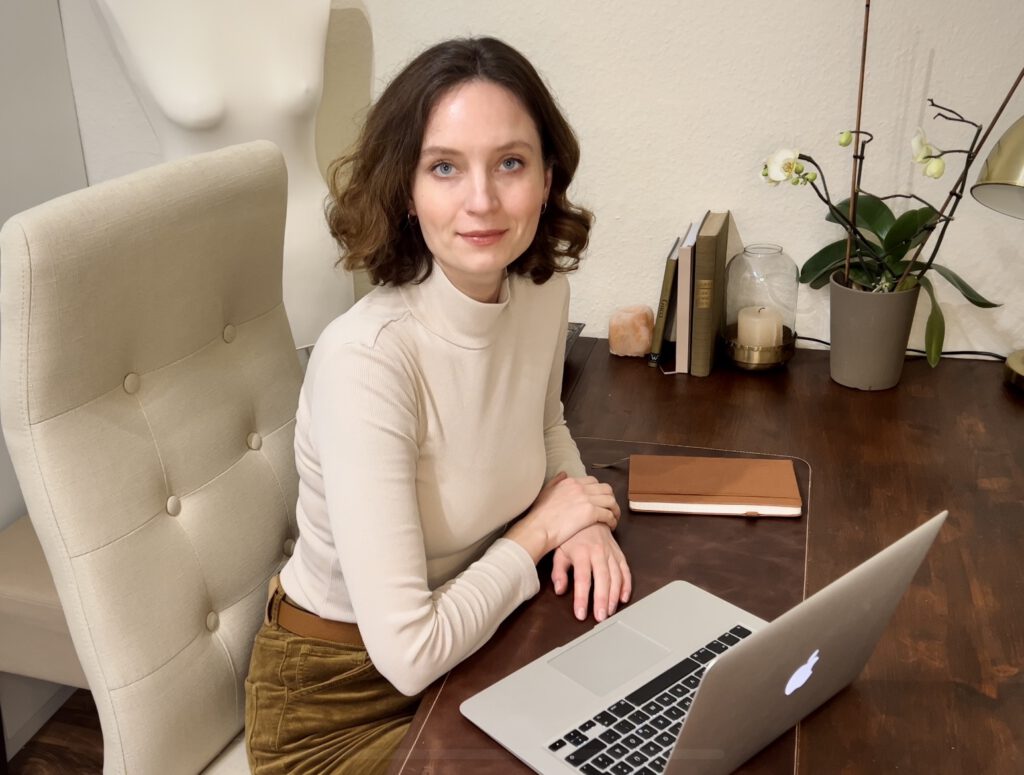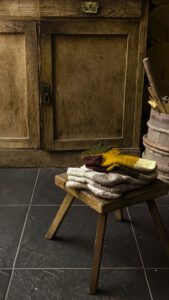Affiliate Disclosure
Some of the links on this page may be affiliate links. As an Amazon Associate, I earn from qualifying sales from these links. If you make a purchase or sign up for a membership through these links, I will receive a small commission. This will not cause any additional costs for you. This income helps us to run this website and especially the blog for you.
Introduction
Lately, I’ve been coming across videos or articles that explain minimalism as outdated, failed, or even as a new reason for, well, all the personal problems of the protagonists. Minimalism as a trend seems to be over. What is it about us humans that we seem to be constantly swinging from one extreme to the next? Therefore, today we are dealing with minimalism, its rise and, obviously, its decline.
The Emergence of Minimalism
The 60s
Minimalism as a lifestyle has its roots in the late 60s and was born as a reaction to consumerism and the affluent society. Artists and designers began to create minimalist works of art and products that were characterized by simplicity and functionality. These artists and designers wanted to break away from traditional notions of art and design and instead adopt a new approach that focused on the essence and the essentials. The artists and designers who launched minimalism as an art movement in the late ’60s included Donald Judd, Dan Flavin, and Sol LeWitt.
The 90s
Then, in the 90s, minimalism became popular as a lifestyle as people began to get rid of superfluous possessions and focus on the essentials. Minimalism as a lifestyle became a way to simplify life and set oneself apart from the affluent society. People began to reorganize their lives by focusing on what really mattered and what brought them joy. They reduced their possessions and parted with things they no longer needed or that no longer made them happy.
Today
Over the past 20 years, minimalism has become not only a lifestyle, but also a trend that affects many areas of daily life, including home décor, clothing style, and the way we manage our finances (e.g. the FIRE movement). Minimalist furnishings are, and have long been, a popular way of designing spaces that impress with their simplicity, elegance and functionality. Minimalist furniture and decorations are characterized by clean lines, geometric shapes and a reduced color palette that give the room a timeless aesthetic.
Why minimalism?
Overall, minimalism can be understood as a reaction to an affluent society and a material culture that is, or at least was, characterized by consumerism and excess. Minimalism, as a lifestyle and trend, offered, and still offers, an alternative and an antidote to these phenomena by focusing on the essential and the simple. Minimalism can help us simplify our lives, free ourselves from unnecessary baggage and focus on what really matters. Minimalism does not only mean that you own fewer things, but that you consciously choose what you own. Through minimalism, you can not only make your living spaces more stylish, but also live more sustainably. You avoid unnecessary consumption and thus also do something good for the environment.
Drivers of minimalism
Well-known personalities who promoted minimalism as a lifestyle include, for example, the author and blogger Francine Jay, who is also known as “Miss Minimalist”. She has written several books on minimalism and has given her readers tips on how to simplify their lives and free themselves from superfluous possessions. Another well-known minimalist is Leo Babauta, the author of the blog “Zen Habits”. Babauta has also published several books on minimalism, encouraging his readers to simplify their lives and focus on what really matters.
But Marie Kondo, too, became known in connection with minimalism. She is a Japanese tidying expert who gained worldwide fame with her method “KonMari”. The method focuses on decluttering and tidying up possessions and emphasizes the importance of joy and gratitude. Many people have discovered minimalism as a lifestyle through their method, tidying up and simplifying their homes.
The benefits of minimalism
One of the biggest advantages of minimalism in the living room is that you create more space. You can concentrate on the essentials and no longer have to navigate through superfluous things. This makes the living space look more open, quiet and inviting. But if you believe in Feng Shui, you would also say: “the energies can flow better”. Let’s face it, whether good energies flow through our house or not, you feel relieved with fewer things and with more order. That’s I think is a fact that most people would agree with.
The constant too much
The overload of things, some of which we have grown up with or burdened ourselves with over the years, is stressful, overwhelming, downright and paralyzing to a certain extent. In other articles in the past, I have already addressed the phenomenon of the feeling of “having nothing to wear” with a full wardrobe. As with the wardrobe, so it is with all the other things you have acquired over the years. How often do we all fall victim to sophisticated marketing strategies that trick us into buying things we neither need nor really want? Too often, probably.
Yes, it hurts to give away or even throw away things that were purchased unnecessarily and paid for with the hard-earned money. But it hurts even more to burden yourself with it every day. Even getting tired of making decisions when it comes to such supposedly simple things as getting dressed in the morning, because the selection is simply too large and the things are not really important to you, because in the worst case, they are inferior fast fashion.
Mindfulness
Minimalism can be very helpful in freeing yourself from this kind of burden. Which is actually quite cynical, considering that millions of people and children are still affected by life-threatening poverty and hunger in 2023, isn’t it? Maybe conscious minimalism is necessary to make us appreciate our possessions more? Or maybe we at least recognize our individual role in the consumption of resources? Otherwise, we may tend to trade our precious life time for too many things that are actually worthless.
Sustainability
Minimalism can also help you live more sustainably overall. It avoids unnecessary purchases and focuses on durable and sustainable furniture, decorations and garments. Paying attention to sustainable materials and manufacturing processes when buying furniture, decorations and clothing has an impact on our environment. However, no one benefits from blind fanaticism, but everyone benefits from more awareness.
The Cons
While minimalism offers many advantages, there are also some disadvantages. Some people may find it difficult to part with things that have emotional value to them, even if they no longer need or use those things. Also, minimalism as a lifestyle can be too extreme for some people and they may feel uncomfortable in an environment without adequate comfort. There are also critics who argue that minimalism as a trend can lead to another form of conformity, and that it is important to encourage diversity of lifestyles and perspectives.
The arguments against it are probably as varied as those in favour. As with everything, we tend to define a counter-movement at some point in a popular movement and to be able to justify it accordingly. The fact is, minimalism has always promised a kind of “liberation”, but for many, minimalism may also have more of a taste for restriction. Especially with the frugalist FIRE movement, the question arises as to how much one can limit oneself extremely and for how long in order to actually achieve the longed-for goal of “financial freedom” at some point in the distant future. And in the vast majority of cases, however, this financial freedom certainly did not mean a life of prosperity. Many of these minimalists lived and still live in simple huts somewhere in the woods. Of course, there will be some who have never regretted or will never regret their decision to adopt this lifestyle, but certainly, or rather, obviously, many also came to an insight and a rethinking over time.
Our Footprint
Even if we think we’re doing everything right, objectively it won’t be “enough” for some or “too much” for others. I recently ran a calculator online to calculate my own “footprint” and was honestly a bit surprised. My lifestyle has really not changed for the “worse” in recent years, on the contrary, I got rid of my car two years ago and thanks to Covid etc.bin I haven’t traveled far or even by plane for years, which is why I assumed that the result would be better than my last calculation a few years ago, But far from it.
5 years ago, when I last calculated the whole thing, my result was that I would consume 0.8 Earths myself. Throughout the year, it should be noted. This time, however, after just half a year since the beginning of the year, the footprint calculator calculated already spent soils of 1.1 for me. Somehow that doesn’t quite fit together, does it? Have the operators of this site changed their calculation basis? Or am I just wrong and have false memories of my lifestyle back then? Still, my impression is, basically, no matter how much we limit ourselves, the scale seems to rise with it. This leads to the fact that our supposed “successes” are not reliably measurable or comprehensible for us consumers and we are also chased after an alleged ecological optimal state, which we as a world population will probably never achieve.
Maybe the pressure is just too much for some. In any case, I think that the widespread discontent with climate activists, for example, also contributes to the fact that a counter-movement has now been set in motion again.
Conclusion
Minimalism is, in my opinion, a great way to make your interior, wardrobe and lifestyle stylish and sustainable. By consciously choosing furniture, decorations and garments, you can create more space and order, which actually increases your well-being. Above all, since many of us work regularly or exclusively in the home office, I think this is an important factor in our own home in order to be able to feel comfortable in a professional context in addition to our private and family life, as well as to be able to work productively and concentrated. In addition, we all benefit as a society if we all consume more consciously, choose more sustainable products and also pay attention to their quality and production. Still, it can be depressing to give up only or permanently, especially if it really feels like giving up to the individual. Everyone can only decide for themselves to what extent it is still an enrichment for them, or at what point it becomes an unbearable restriction. But that doesn’t make it bad across the board. I’m still convinced that sometimes less is more.
How do you see the topic of minimalism? Do you consciously try to limit yourself in your life? Or do you not care? Do you think that minimalism as a trend has come to an end or do you think that’s nonsense? Feel free to let me know in the comments.
All the love
Christina
“This society is obscene insofar as it produces and shamelessly displays a suffocating abundance of commodities while outside it deprives its victims of the chances of life; obscene because it stuffs itself and its trash cans while poisoning and burning down the meager food in the areas of its aggression; obscene in the words and smiles of politicians and entertainers; in their prayers, their ignorance, and in the wisdom of their guarded intellectuals.”
Herbert Marcuse
Share this post:

We’re excited
to share our news with you!
Would you like to receive information about our latest articles and our latest products directly in your mailbox?
Sign up for our newsletter!
We’d love to keep you in the loop.
About the author

Christina Ernst is founder and CEO of Linen & Quince. She is also a designer, author and real estate expert. She shares her experiences and knowledge not only on our Linen & Quince blog, but also on her personal blog, christinaernst.net , where she writes about financial knowledge, starting a business, real estate knowledge and personal development. She loves interior design, art, antiques, as well as elegant, sustainable and high-quality fashion.



